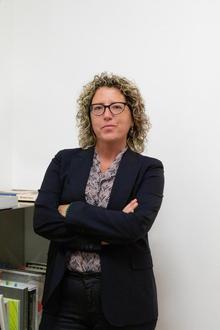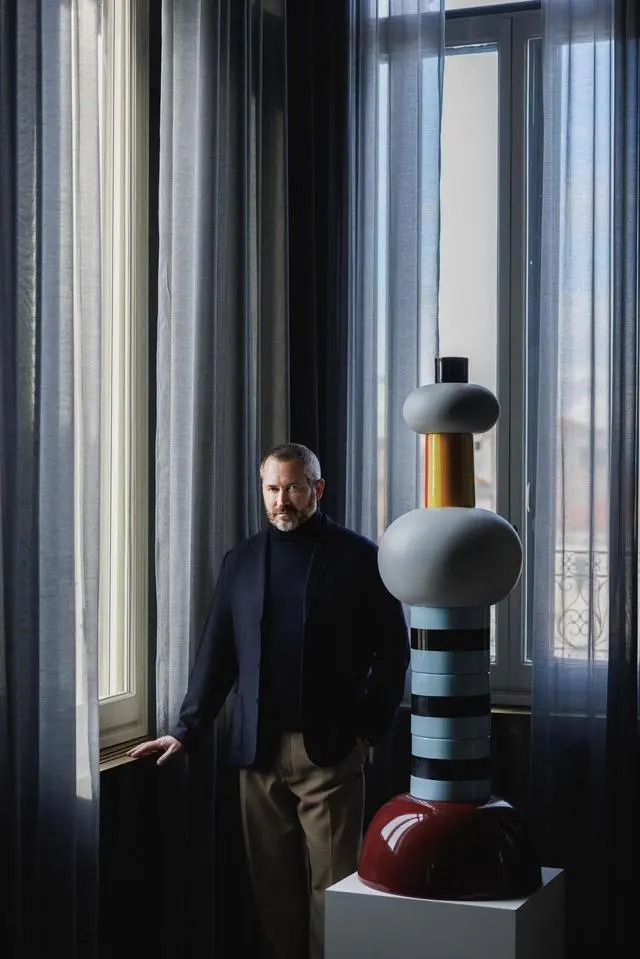04 July 2025 Athens Exhibition Says the Revolution Could Begin on Your Plate | 04 June 2025 Artforum, "Diana Anselmo" | 16 April 2025 Frieze, "Must-See: The Tears of Karl Lagerfeld" | 16 April 2025 Süddeutsche Zeitung Magazin, "Mit welcher Haltung kommt man in der Kunstwelt am weitesten, Maurizio Cattelan?" | 09 April 2025 The Berliner, "Consider Listening: An exhibition urging calm amidst outrage" | 02 April 2025 Wallpaper, "Aboard Gio Ponti's colourful Arlecchino train in Milan, a conversation about design with Formafantasma" | 26 March 2025 Frieze, "Diego Marcon’s Films Conjure a Familiar, Grotesque World" | 19 March 2025 Arts Hub, "1500-degree molten steel installation, inspired by Caravaggio, to drip from the ceiling of Mona" | 15 May 2024 Frieze, "Silvia Rosi Gives Voice to Her Parents’ Migration Story" | 30 March 2024 The Korea Times, "Foreigners Everywhere: Artist duo who inspired this year's Venice Biennale lands in Seoul" | 07 February 2024 Artnet News, "Ceramics Are as Contemporary as a Smartphone: Chiara Camoni on Her Tactile Sculptures"
Eva Brioschi
interviews
15 January 2025
Curators
School and the limited importance given to the teaching of art history
Art historian and author, curator of the La Gaia collection in Busca, curator of the Fondazione Antonio Delle Nogare collection in Bolzano, member of the board of Carico Massimo in Livorno, Project Manager of the Torino Foto Festival Exposed
Which contemporary Italian artists (living) have, in your experience, achieved greater visibility abroad and thanks to which factors (e.g., galleries, biennials, exhibitions, curators, etc.)?
Certainly, the Arte Povera artists in the 1970s, the Transavanguardia in the 1980s, and more recently individual personalities who managed to establish themselves “on their own,” such as Maurizio Cattelan, Monica Bonvicini, Alessandro Pessoli, Rudolf Stingel, Vanessa Beecroft, Francesco Vezzoli, Paola Pivi, Lara Favaretto, Roberto Cuoghi. The factors behind their success are definitely linked to excellent personal communication strategies, support from strong galleries well positioned in the international scene—both Italian and foreign—as well as critics and curators who contributed to building a winning narrative and promoting their work internationally.
In your opinion, which contemporary Italian artists have not yet achieved adequate visibility despite their artistic value, and what are the reasons for this lack of recognition?
Giorgio Andreotta Calò, Marzia Migliora, Francesco Gennari, Cesare Pietroiusti, Yuri Ancarani, to name a few. Some progress is happening on this front, but very slowly. The problems are always linked to poor interaction between the national scene—where these artists are also very well positioned at the market level—and the global scene, where they struggle to emerge. There is definitely a lack of attention from foreign critics and inclusion in international exhibition contexts. Some progress is also due to tools like the Italian Council, which promotes projects by Italian artists and curators abroad, but greater synergy between Italian and foreign institutions is needed.
In your experience, what are the steps and elements that favor the international career of a contemporary Italian artist? And where is the Italian system lacking in supporting Italian contemporary art on the international art scene?
The gaps in the Italian system are many, interconnected, and at multiple levels. Just to name one: school and the limited importance given to the teaching of art history, starting from compulsory education. How can a country that holds the world’s beauty primacy (see UNESCO) not provide deep, consistent, theoretical, and practical study of its own artistic heritage and, more generally, art history? Art is not oil, as someone once said, because it should not primarily produce economy. It must be, as Montanari wrote, oxygen. In a country like Italy, it must constitute the foundational nourishment of every social and civil consciousness, regardless of the study path undertaken.
And here we come to politics, with its increasingly utilitarian approach to education, politics as a seat of clientelism and power centers overseeing important choices, such as the appointments for events like the Venice Biennale. How is it possible that the curator of the Italy Pavilion is decided by a minister based on his “elective affinities”? Shouldn’t there be commissions of recognized sector operators to vet these important and strategic choices? This is why the lack of trust in native institutions pushes many to emigrate to countries where the professionalism of the artist, curator, and researcher is more recognized.
To all this must be added a certain obsolescence of educational offerings. Academies often lack sufficient openness toward the community, the territory in which they operate, and even a network of exchanges with homologous institutions beyond borders. This has produced a discourse often solipsistic and sterile, which has not favored the training path of many aspiring local artists nor the “freshness” of vision and knowledge transmission. It is therefore necessary to work more on creating the “Sistema Italia” (Italy System). To work, on multiple levels and phases, on creating a system that includes all operators in the Italian artistic landscape, whose professionalism must be recognized and protected, moving beyond the prejudice that those working in culture do so as a hobby or amateurishly.
There have recently been virtuous examples of work and awareness in this sense, such as the Contemporary Art Forum, whose public acts are an excellent starting point for analyzing the current conditions of the “system” and for setting up possible actions for its improvement. I also think of the establishment—during the pandemic—of AWI Art Workers Italia, born precisely to assert the right to regulated, protected, and recognized work for the thousands of people producing culture in Italy, despite difficulties, shortcomings, political failures, and legal gaps. Another example I find virtuous is the Italics consortium, created by the excellence of contemporary, modern, and ancient art galleries in Italy. Galleries that normally compete have decided to join forces to promote something that we Italians all take for granted: the greatness of our territory in terms of beauty, culture, history, genius, taste, and atmosphere, I would dare say. An awareness of Italian “coolness” to counteract that climate of foreign-obsession that has prevailed for decades and, on the contrary, makes us very provincial.
© All rights reserved
other interviews
other interviews Luca Bombassei
Being a Patron Today: Connecting, Listening, Acting
Curators
20 May 2025
Luca Bombassei
Being a Patron Today: Connecting, Listening, Acting
Curators
20 May 2025
 Valentino Catricalà
Invisible Talents: The Paradox of Italian Art Abroad
Curators
20 May 2025
Valentino Catricalà
Invisible Talents: The Paradox of Italian Art Abroad
Curators
20 May 2025
 Vittoria Matarrese
Italian Art, a Global Vocation in a Local System
Curators
22 April 2025
Vittoria Matarrese
Italian Art, a Global Vocation in a Local System
Curators
22 April 2025
 Francesca Guerisoli
Greater Public Support for the Production and Promotion of Artistic Work
Francesca Guerisoli
Greater Public Support for the Production and Promotion of Artistic Work
